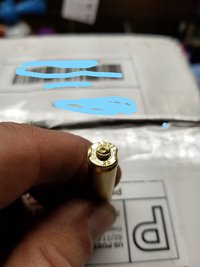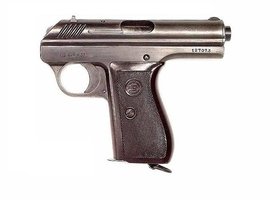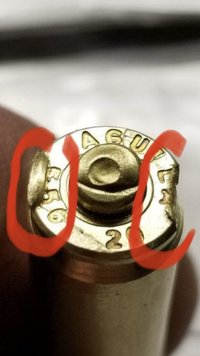It is aggressive. I haven't had any issues with it - that I'm aware of.
So, two questions -
What's does having too much crimp do to the round - in terms of its performance?
and
How would I know that it's too aggressive? Pull a bullet - and if it's deformed, it's too aggressive?
I've loaded lots of 9mm, but I basically know just enough to do the task - I'm open for learning.
Thanks.
Your expander die should open the case mouth just enough for a bullet to sit atop the case without the sides being shaved off when seated. The crimp is simply to return the case to a straight wall, so the case mouth is back in line. A lot of people skip the crimp step altogether with rifle but that is another discussion.
Excess crimp will reduce the longevity of the brass, increase pressure, and deform the bullet. FWIW



